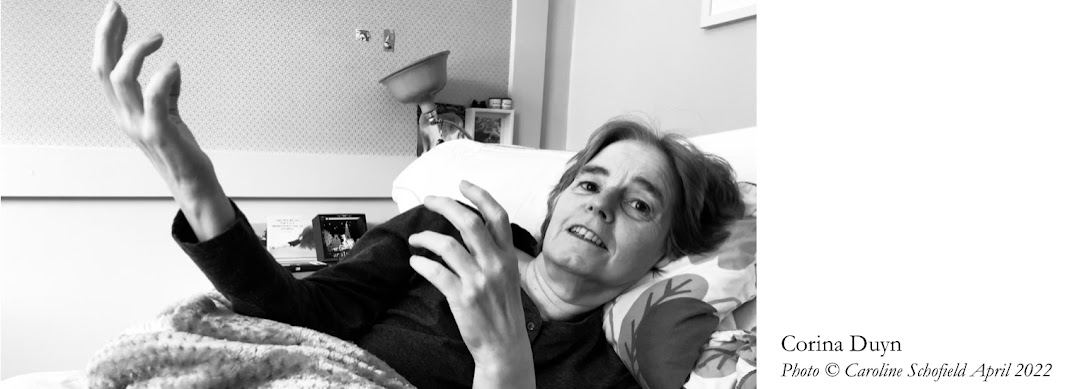By pacingour
activities we
can accomplish our dreams
one
minute, one
breath, at
a time
Corina Duyn
Playing detective
I have been asked many times how I manage to live (well) with chronic illness. What worked for me find acceptance? How to find positivity within the challenges. How to manage the day to day lack of energy, and pain? Sleep, Activity, being around other people. Solitude, and silence, diet...?
There are lots of thoughts there. I won't get them all in the one post, but will do this over several weeks. Some thoughts are already written about- like in the post about the
Twenty Minute Rule. or explore my previous blogs (see suggestions at bottom of this page)
One of the most important suggestion is that of PACING!
- Pacing every activity, so not to overdo it. Not go over your energy or pain limit. To avoid the dreaded crash...
- In order to learn to understand where your limits lie, it is important to be a detective or private investigator of your day's activites, moods, energies...
- For at least a two week period write down EVERYTHING you do.
- And if it increased- decreased- or kept your energy/pain the same
- After this time there is an evaluation on how your spend your day, what works, what doesn't, and how you can use these observations to set up a schedule for yourself.
- After the two week record keeping we can create a PACING-Base Line sheet, which I will explain further in another post.
- Don't be put of by the length of this post. It just contains suggestions of what to write on your activity sheet, and has sample sheets to print out.
 |
| Sample Activity record Sheet |
To do:
- Print the attached sample sheets at bottom of this post, or create your own personal Detective Sheets in a copy book.
- Be meticulous in your note taking.
- I would suggest to use the Activity Sheet as your main Record keeping sheet, but if you can - go into more detail on the Sleep/Rest sheet and Social Contact sheet.
- Both I think are hugely important in figuring out where our energy goes.
- There is also one for food intake sheet, but you might like to do this note taking at another time.
Write down: (these are only suggestions- tailor it to your circumstances)
- Sleep and naps
- The time you got up
- Naps during the day
- how long
- where did you nap
- How did you nap?
- With music on? TV? In bed? On the couch? In silence?
- What time do you go to bed
- When did you get to sleep
- How long you sleep, or rest
- The quality of your sleep, or rest
- Activity
- Write down every little thing including:
- reading a book, watching a movie, be online, Facebook...
- doing the dishes
- Sitting up and looking out the window
- Watch tv
- meditation/yoga
- hanging laundry
- going for a walk
- colouring
- crafts
- Did you go outside
- to sit
- to walk
- to have social contact
- How did it make you feel?
- Sitting up - if you normally are bed bound.
- Add how long you did these activities
- Did you enjoy them?
- Social contact
- how?
- Phone?
- In person?
- social media?
- with whom?
- how long?
- how did it make you feel?
- How is your mood during or after the activity
- What made you happy today
- What made you smile
- What made you sad
- As you see on the sheets there are two boxes at the end:
- Did your fatigue or pain increased or decreased, or stayed the same.
- This is very important to fill in
From these notes, you can find out what works for you and what does not.
For example, you might realize that twenty minute social contact is fine. Half an hour creates more fatigue. Maybe walking for ten minutes is fine. Fifteen is too much. Spending time with one person is fine- with someone else it might not. Napping might not be as restorative as you had thought. Social media is fine during the day, but not at night... Lying in bed to write is good, sitting at the tabel is not. You get the idea.
- I will write about what to do with these findings in more detail in another Blog post
- SEE FOLLOW UP POST HERE
- Please do add your thoughts as comments here on my blog, so others can benefit from a collective wisdom.
- Sample Sheets to print- or use as guidelines
- If you like a PDF of these sheets, please contact me






No comments:
Post a Comment
It is always so lovely to hear from my readers.
Thank you for stopping by and leaving a comment.
With every best wish
Corina